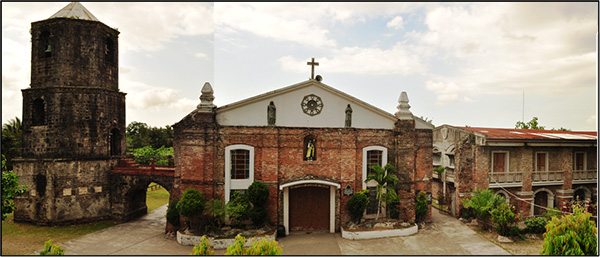Analytical Chemistry Methods of Estimating the Original Firing Temperature of Bricks from a 19th Century Convent in the Philippines: Perspective of a Southeast Asian Country | Mga Pamamaraan ng Mapanuring-Kimika sa Pagtantya ng Orihinal na Temperatura ng Pagsunog sa Ladrilyo Mula sa Isang Ika-19 na Siglong Kumbento sa Pilipinas: Pananaw ng Isang Bansa sa Timog-Silangang Asya
DOI:
https://doi.org/10.26721/spafajournal.2021.5.651Keywords:
brick, chemical analysis, firing temperature, Southeast Asia, PhilippinesAbstract
Countries in Southeast Asia have a unique and diverse culture due to its varied ethnic groups having different traditions and beliefs. The process of manufacturing building materials such as brick masonry is one aspect where this distinctiveness is manifested. This study provides a general analytical chemistry method that will estimate the original firing temperature of a historical brick material from a convent in Milaor, Camarines Sur, Philippines. Different instrumental techniques were utilized namely the Energy Dispersive X-ray Fluorescence (EDXRF), Fourier Transform Infrared (FTIR) Spectroscopy and Scanning Electron Microscopy with Energy Dispersive X-ray (SEM-EDX). From these techniques, the chemical and mineralogical composition of the brick was reported. The clay mixture used in the production of the brick is known to be non-calcareous and low refractory, that was fired in an oxidizing atmosphere. The brick’s microstructure is classified within the initial vitrification stage based on the features of the mineral transformations. The results of this study point to an estimated firing temperature range of 650°C to 850°C. An emphasis on the importance of chemical analysis in studying cultural heritage materials in the Southeast Asian region is also highlighted on this paper.
Ang mga bansa sa Timog-Silangang Asya ay may natatangi at magkakaibang kultura sanhi ng iba’t ibang mga pangkat etniko na may magkakaibang tradisyon at paniniwala. Ang pamamaraan ng paggawa sa mga materyales ng lumang gusali tulad ng ladrilyo ay isang aspeto kung saan naipapamalas ang pagkakaiba-iba nito. Ang pagaaral na ito ay nagbibigay ng isang pangkalahatang pamamaraan ng mapanuring-kimika para tantyahin ang orihinal na temperatura ng paggawa sa lumang ladrilyo mula sa isang kumbento ng Milaor, Camarines Sur, Pilipinas. Iba’t ibang mga instrumento ang ginamit tulad ng Energy Dispersive X-ray Fluorescence (EDXRF), Fourier Transform Infrared (FTIR) Spectroscopy at ang Scanning Electron Microscopy na nakakabit sa Energy Dispersive X-ray (SEM-EDX). Mula sa mga intrumentong ito, ang kemikal at mineral na komposisyon ng ladrilyo ay iniulat. Ang mga pinaghalong luad na ginamit sa paggawa ng ladrilyo ay masaasabing hindi gaanong madami ang bilang ng kalsiyo at mababang refractory, na sinunog sa isang kapaligiran na sagana sa hangin. Ang mga pinaka-maliliit na istruktura ng ladrilyo ay masasabing nasa paunang yugto ng pagtunaw ng mga mineral sa luad, batay sa mga pagbabagong anyo ng mga ito. Sa mga resulta ng pagaaral, masasabi na ang tantyang temperatura ng pagsunog ay nasa 650°C hanggang 850°C. Binibigyan ng diin ang kahalagahan ng pagsusuri ng kimika sa pagaaral ng mga materyales na pamanang kultura sa rehiyon ng Timog-Silangang Asya ay naitala din sa pagaaral na ito.

Downloads
Published
How to Cite
Issue
Section
License
Copyright (c) 2021 SEAMEO SPAFA and Author

This work is licensed under a Creative Commons Attribution-NonCommercial-NoDerivatives 4.0 International License.



